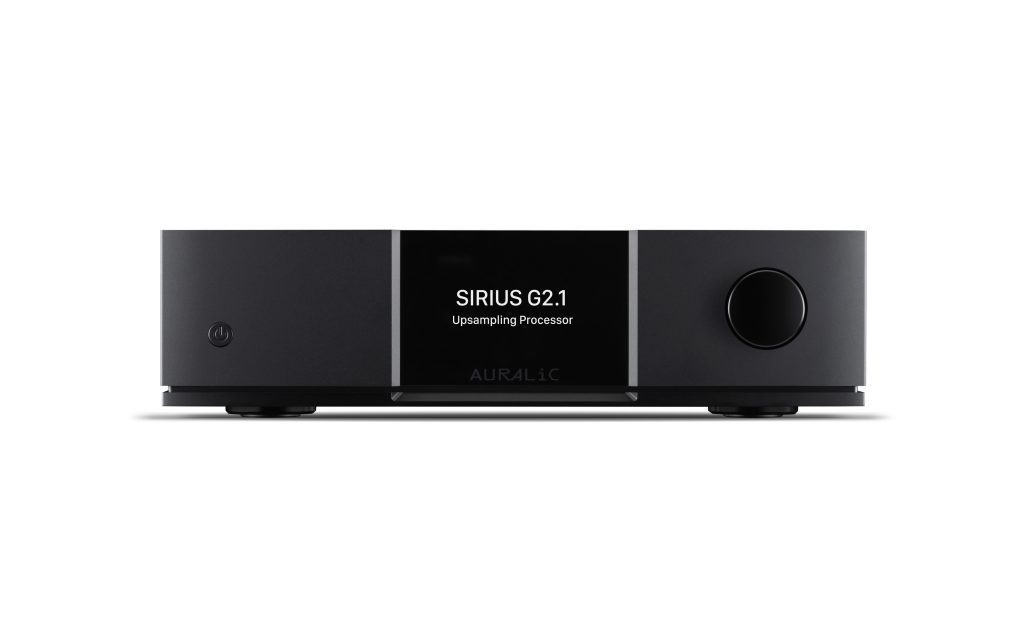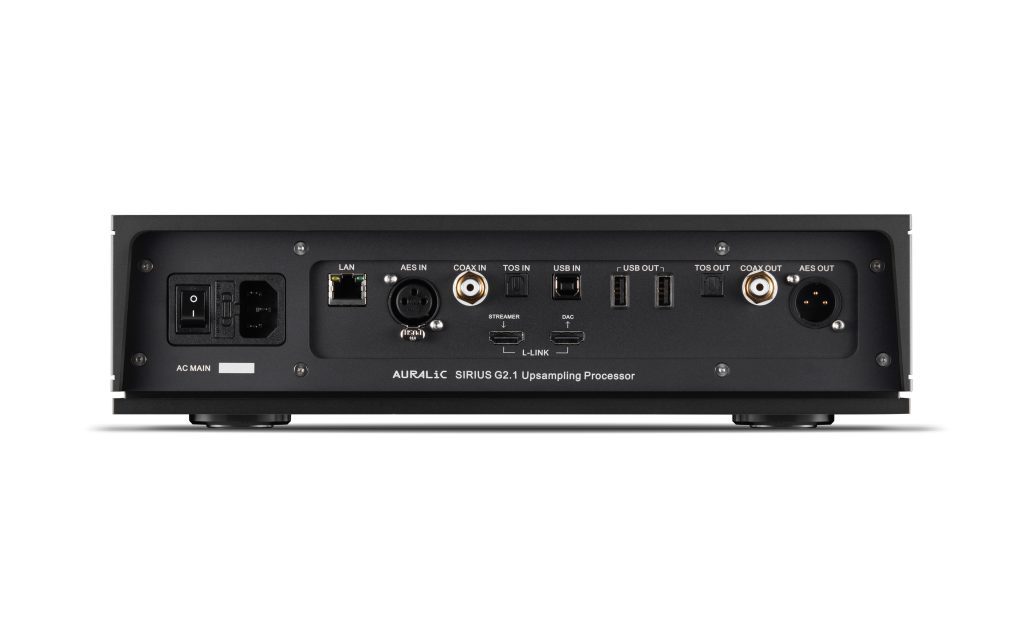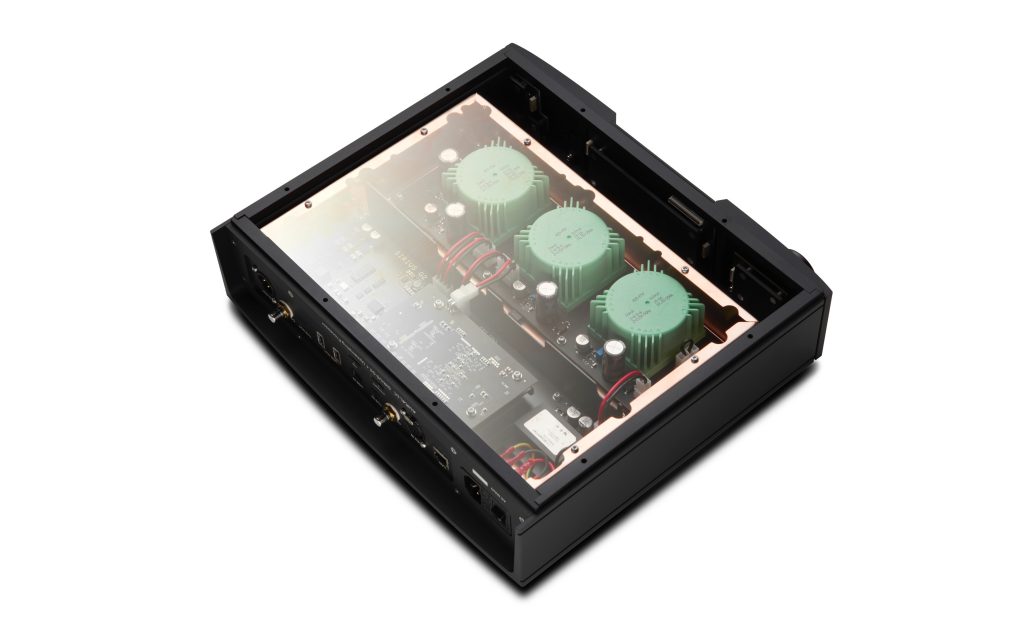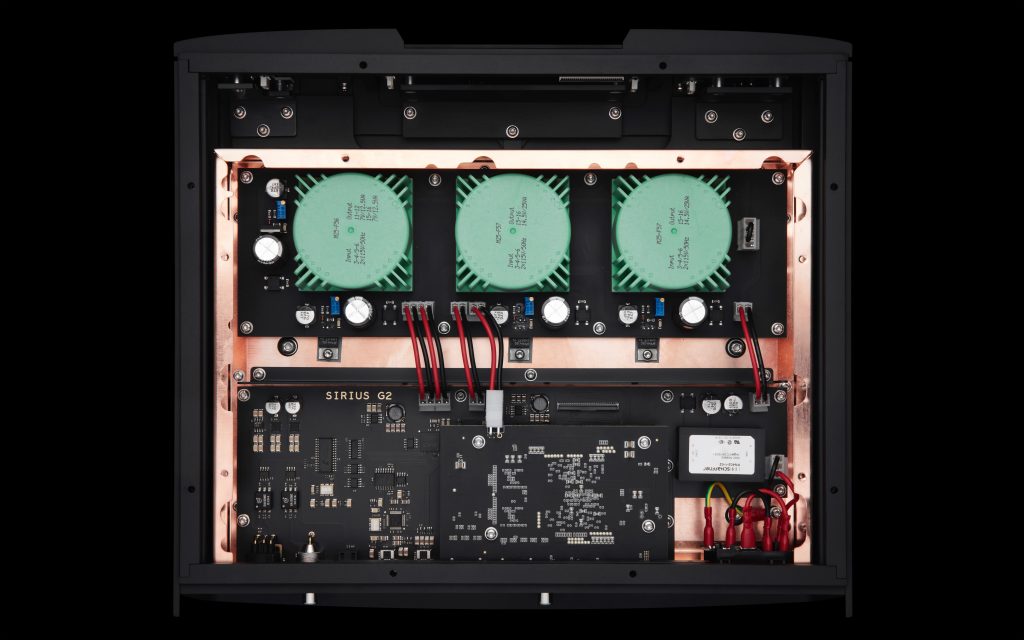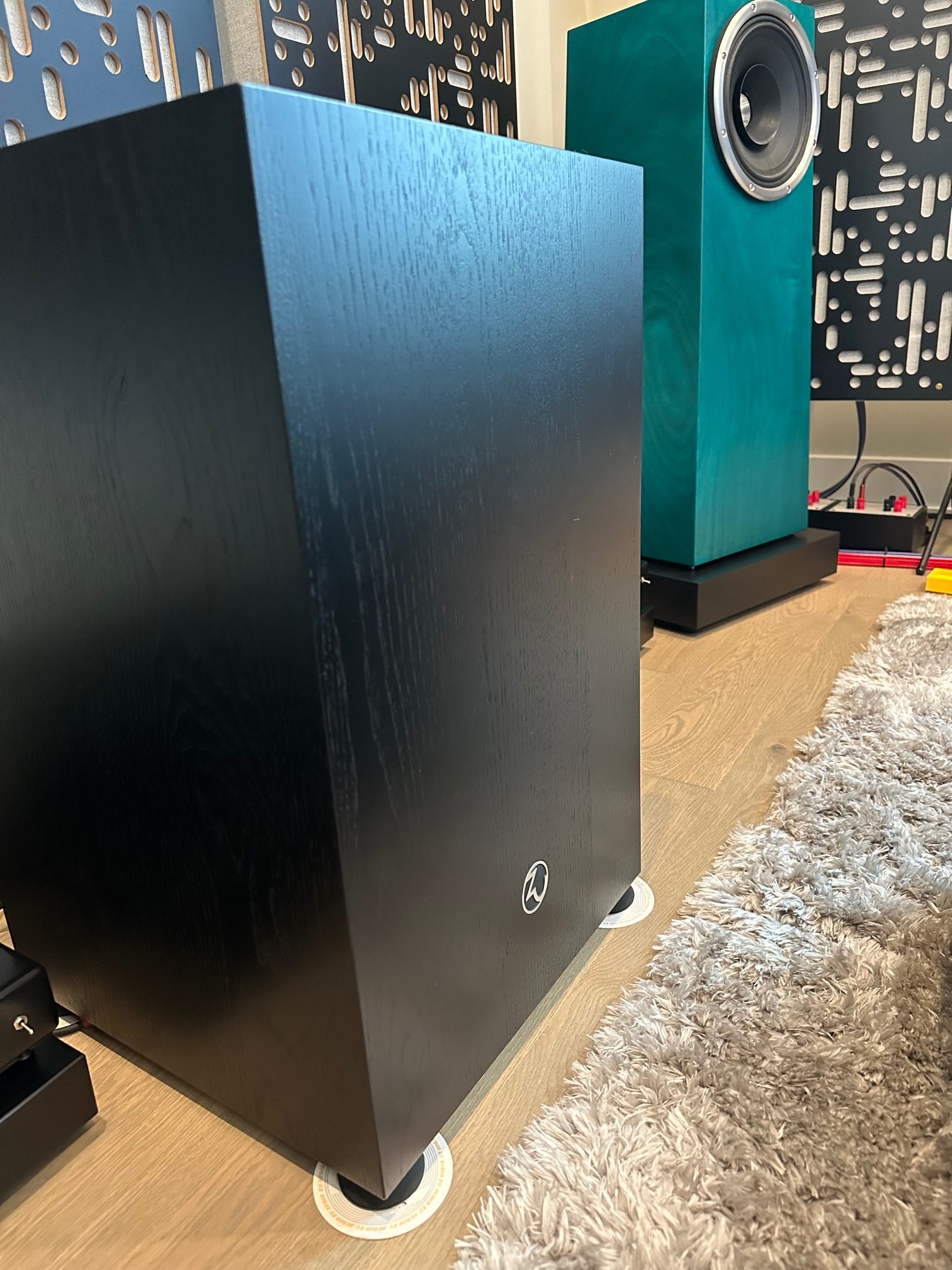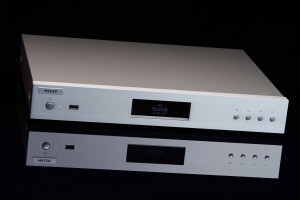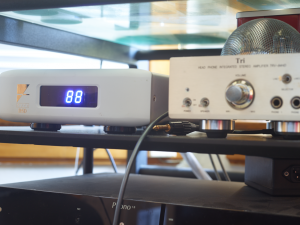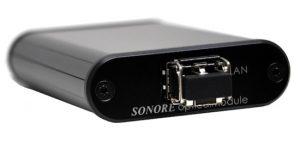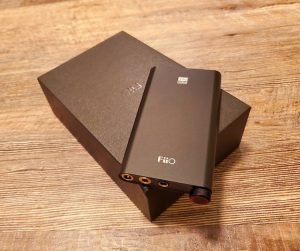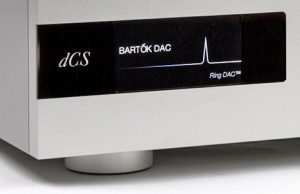These days it seems like many high end manufacturers are building all in one digital front ends. What I mean by that is one box that consists of both the DAC and Streamer. On paper this approach makes a lot of sense. With the rise of Roon and HD digital music services, many audiophiles are embracing streaming in one way, shape, or form and combining the DAC and the Streamer is a logical step.
However there are a few manufacturers who are bucking that trend and building out product lines based around digital separates. Probably most well known is DCS, who for years have been building digital product lines consisting of digital sources, up-samplers, and DACs. Another manufacturer is Chord, who with the introduction of the M Scaler stepped into the world of multi-component digital front ends. However, we are not going to talk about either Chord or DCS today, instead we are going to talk about AURALiC, which in my opinion is one of the most interesting companies in digital audio.
AURALiC builds some of the best built, and in my opinion some of the best sounding, digital audio equipment in the market today. Their case work is unmatched except by the likes of Chord and DCS, their software is in its own league, only bested by the likes of Roon, and when it comes to sound, every product that I have listened to from the AURALiC line has delivered. If you have not, it may be worth reading my previous review on the AURALiC Aries G1 (HERE) which to this day is my all time favorite streaming device.
AURALiC's flagship line in the G2.1 product line, which consists of four digital separates: the Vega G2.1 streaming DAC, the Aries G2.1 streamer, the Leo GX digital clock, and the Sirius G2.1 up-sampler. I have owned or listened to ever component in the G2.1 line, having owned the Vega G2 and Leo GX previously, and having spent the last few months with the Sirius G2.1 and Aries G2.1. In today's review we are going to focus on the latter two the Aries G2.1 and the Sirius G2.1.
A Closer Look at the Aries G2.1 and the Sirius G2.1
One of my favorite things about AURALiC products is their build quality and heft. The G2.1 line uses an updated aluminum case that has such tight build tolerances, it is hard to remember that the case is not a simply a single solid piece of aluminum. Both the Aries and Sirius are shockingly heavy, partially due to the new copper interior chassis, which is unique to the G2.1 line. That is right, under the aluminum exterior chassis, there is a separate interior chassis made of solid copper to provide additional shielding for the digital audio components inside. It's these little details that tell me I am reviewing an AURALiC product.
Looking at the front of the device, there is a stunning OLED screen with a glass front. Menu navigation is easy thanks to the simple, but well built software, and every button and knob has just the right fit and finish. Turning both units around, the back panel is clearly labeled, and all of the inputs/outputs are laid out in a logical way with plenty of space. The G2.1 line is a luxury product line, and I have still not seen another company match AURALiC's build quality at this, or to be frank, at any price.
Focusing on the Sirius G2.1 first, along with the OLED display, you also get a power button and rotary knob on the front of the case. The power button, as you might guess, turns the Sirius on and off, and the rotary offers selection and menu navigation controls, as well as digital volume control and mute functionality when not in the menus. One thing I always loved about my Vega G2 was how the volume knob felt, it is the tactile experience that I have measured every volume knob and button against, and the Sirius's volume knob matches the quality that I remember from my Vega G2.
Rotating the Sirius around, you are presented with a series of digital inputs and outputs. You can input AES, Coax, Toslink, USB, and output all four as well. The Sirius G2.1 has two USB outputs. One that is completely isolated, and will provide the best sound quality of the USB output options, and one that maximizes compatibility. All of these inputs and outputs makes the Sirius G2.1 incredibly versatile. You cannot run USB DACs and the other digital outputs at the same time, but if you choose to output to the other digital outputs (AES, Coax, Toslink), you can connect up to three DACs to the Sirius G2.1 at the same time, which can be fun when comparing equipment. There is also an Ethernet port on the back of the Sirius, however this is only used for firmware updates and web configuration. I wish AURALiC offered basic streaming functionality, similar to what they did with the Vega G2 on the Sirius G2.1, however they did not, and as a result you will need a digital source to put in front of the Sirius G2.1.
The Sirius also has AURALiC's proprietary Lighting Link technology, both an input and an output. This uses an HDMI cable to provide a single high bandwidth digital connection that can allow you to chain together multiple AURALiC G2/G2.1/GX products together. The benefits of this connection is that it has incredibly low jitter and does not require compression of the clock signal. It also offer bi-directional control, allowing all the components in a G2/G2.1/GX stack to act as if they are a single component. The single point of control is honestly my favorite part of the Lighting Link technology, and the fact the AURALiC thought through this and came up with a solution once again shows there attention to detail.
The Sirius G2.1 is the first product from AURALiC to show off their next generation digital processing platform. This platform is built on top of the latest generation Xilinx FPGA. For those who do not know, FPGA stands for Field Programmable Gate Array. What makes FPGAs interesting is that they basically contain a bunch of hardware that can be configured to perform very specifics tasks. This configuration is done by software, and you write the configuration similar to the way you write a computer program, but instead of the program producing a bunch of 1s and 0s that run on a general purpose computer (like the one you are reading this review on), it instead configures and connects the various pieces of hardware within the FPGA to create a purpose built computer optimized to do a very specific task when data is supplied on its input.
Why would you use FPGAs? FPGAs, as I said above, allow you to essentially create hardware that is optimized to solve a particular problem, and therefore it can solve that problem quickly and potentially better than a general purpose computer. This becomes important when we talk about digital audio because upsampling can come in various forms. It can be fast, but inaccurate, and it can be incredibly accurate, but slow and resource intensive. To do upsampling in an extremely high quality way, quickly and with accuracy, you either need a powerful general purpose computer or specialized hardware that can speed up the process. For example, the algorithm that AURALiC uses to upsample music to DSD 512 would require the dedicated resources of a powerful and expensive desktop computer without the FPGA implementation in the Sirius. This would mean extra heat, power, and fan noise all of which we want to avoid in a listening room.
AURALiC is not the first company to deploy FPGA for digital audio processing, Chord has been doing it for years, and there are several companies such as PS Audio and DCS that also use FPGAs as well. One of the benefits of FPGAs is that you can keep upgrading the FPGA configuration even after a product ships. An updated FPGA configuration can have a much larger impact then just a software update, as it can literally reconfigure the hardware within the device. This is why PS Audio and DCS can produce DACs that stay current for years. Every time they push a major software update, the DAC/Digital platform takes a meaningful step forward. With the incorporation of the FPGA into the Sirius, AURALiC is putting itself in the same position to be able to offer these benefits to its customers, and will hopefully allow the Sirius to have a seriously long shelf life. It is too soon to know whether AURALiC will execute on this, but past experience with them has taught me to be optimistic as they have a history of supporting and adding features to products long after release.
Switching gears to the Aries G2.1, you are greeted by the same excellent case work that you will find on the Sirius G2.1. The front of the unit has four menu navigation buttons and a power button. On the back of the Aries G2.1, you will find a LAN input as well as a USB input for an external hard drive/external CD drive. For outputs you get USB out (this is the lowest noise USB output I have ever seen), AES, Coax, and Toslink out. Like the Sirius G2.1 you can either output to the USB out or the Digital outputs, but not both at the same time.
The Aries G1 and Aries G2.1 are very similar devices. They both provide network streaming via Roon and Lighting DS. They both support USB outputs, external USB hard drives, external CD drives, and and an array of digital outputs, and they run the same software. So a very reasonable question is, why would you buy the Aries G2.1 over an Aries G1?
The answer to this question comes in three parts. The first is if you want the very best noise isolation. The Aries G2.1 employs a galvanic isolation, and this coupled with the copper interior chassis resulted in performance that was a step above the Aries G1 for USB DACs. This is slight, but it is noticeable. The second reason you might buy the Aries G2.1 instead of a G1 is because you want to store your entire music library on an internal drive within the Aries. This is not applicable to me, but if I were trying to create the simplest possible setup, this is what I would do. Finally, if you plan to connect the Aries to any of the G2.X/GX products the Aries G2.1 is the clear choice because of Lighting Link. As I described above, it is a proprietary interlink that allows the G2.X/GX products to act as a single product, and it introduces far less jitter then USB or other digital inter-links.
For this review I will be looking at the Aries G2.1 in the context of its use with the Sirius G2.1 Digital Processor. If you want to know more about how the Aries G2.1 performs or about its use with Roon and Lighting DS, please see my review of the Aries G1 (link above). Everything this review talks about is applicable to the Aries G2.1.
Review Equipment
Everything used in this review has broken in for a minimum of 200 hours. Similarly I did not start writing this review until after the 200 hour mark to ensure my point of view was not colored by early impressions.
- Speakers: Custom Build Horn Loaded 3 way loudspeaker (32Hz - 25kHz)
- Headphones: Hifiman Susvara
- Amplifier: ampsandsound Nautilus (NOS tube complement), ampsandsound Rockwell
- DACs: DCS Rossini, Chord Dave, Chord Hugo 2, Schiit Gungnir Multi-bit
- Streamers/Digital Processors: Chord M Scaler, AURALiC Aires G2.1, AURALiC Sirius G2.1
- Power Supply: PS Audio P12
- Interconnects: Wywires Platinum Interconnects
The Sirius G2.1 - A Digital Swiss Army Knife
The Sirius G2.1 is a Digital Swiss Army knife, and can perform many different foundations depending upon what your end goal is. The only thing it cannot do is go into "passthrough" mode. AURALiC is very clear about this. No matter how you configure the device, there will be some level of digital processing that will occur between the inputs and outputs. I personally really appreciate that AURALiC is upfront about this, because in my experience I have never found a component that is truly transparent, even if it has a "passthrough mode."
So what can the Sirius do? It can upsample of course, and it can change formats between PCM and DSD or vice versa. It supports up to DSD 512 and PCM sample rates up to 384kHz. It is a re-clocker, because all of its digital inputs are cached, and then re-clocked using not one but three 72fps clocks. The Sirius can also perform speaker placement compensation, and supports full parametric EQ functionality. On top of all of this, it also provides digital volume control, and while not as good as an analog volume control, in my testing I found it to be a better then using a source device (such as a streamer or a computer) to control the volume digitally.
Now some of you may wonder why you need an up-sampler. Many DACs, after all, support many different sample rates, and many argue that you cannot "create or add detail" if it is not there. We will talk about the create/add detail part a little later but let's focus on other DACs first.
Depending on the DAC, you will either have a DAC that implements a chip, and R2R, or something custom like an FPGA based DAC. Chip DACs are the most common, and generally have the least compute resources at there disposal. It is also true that most DACs have an internal operating frequency, what I mean by this, is that all signals coming into the DAC are upsampled to some value before the DAC actually starts the process of converting the digital music to analog. Because of this, many DACs have input sampling rates and formats that tend to sound better then others. While this is a generalization, I think most would agree that Sabre based DACs for example sound best when fed DSD, preferably DSD256 or DSD512. While Chord DACs, for example, seems to sound better with high sample rate PCM. Similarly Chord, DCS, and AURALiC DACs tend to sound better when using the network (if applicable) or USB inputs. While my Schiit Gungnir Multi-bit sounds best with Digital Coax.
The genius of what AURALiC has done with the Sirius G2.1 is that they have given you a digital platform that provides a way for you to optimize and tailor the digital signal path to the DAC manufacturers strengths. For extremely high end proprietary designs like the DCS Rossini, these benefits are less noticeable, but for DACs with clear preferences for input, format, or sample rate such as Chord or Schiit, the differences can be quite astonishing.
Similarly if you are like me, and your system consists primarily of DACs with excellent onboard volume control, the ability to build things like speaker compensation and parametric equalization into the digital signal chain can make a big difference and make reliance on things like Roon or Dirac easier to shift away from.
Setup and Configuration
For this review, I connected the Aries G2.1 to the Sirius G2.1 using Lighting Link. I did tests using USB as well as AES, and as I expected, I found little difference between any of the inputs Sirius G2.1. This is expected as a big part of the Sirius G2.1's job is to ensure each input is cleaned up as much as possible before it passes data to one of its outputs. The nice thing again about connecting the Aries G2.1 with the Sirius G2.1 via Lighting Link is you get to take advantage of the bidirectional communication that allows the Aries and Sirius to act as a single device. In practice the execution is truly excellent.
The DACs were connected to the Sirius in the following ways (only one was ever connected at a time):
- DCS Rossini – USB In
- Chord Dave – USB In
- Chord Hugo 2 – USB In
- Schiit Gungnir Multi-Bit – Digital Coaxial In
I did try other inputs for each of the DACs above, however these were the inputs I settled on. While I will talk about the Sirius and how it impacted each of the above DAC's sound.
Before I dive into how the Sirius interacted with each of the above DACs I want to talk about the characteristics that seemed to be universally true when the Sirius was in the signal chain, irrelevant of DAC and even sample rate.
The first thing I noticed was the black background. It did not matter what DAC I put in front of the Sirius, each time I was truly surprised at how quiet the background was, which allowed for a greater sense of space and separation. The other thing I noticed was what appeared to be a more pronounced lower mid-range/upper bass. With the Sirius in the signal chain, music simply had a greater sense of drive and rhythm. This again was universal and was confirmed when my wife came in and asked me if I turned up the bass. I did check and make sure the PEQ was disengaged and no other EQ was active. It is also important to note that what I heard didn't sound like EQ, it sounded more natural, almost as if that drive was always there and was just waiting for something like the Sirius G2.1 to uncover it.
This extra drive though is not all fun and good. While I loved the effects it had on my speakers, when listening through headphones I found that it was a little heavier handed then I wanted. While it was easy for me to swap tubes around on my headphone amplifier to fine tune the mid-bass and lower mid-range presentation, those with less customizable options need to think about if they would benefit from that extra drive. If you think you will, then I have a hunch you will love the Sirius. It is also important to note that the Sirius's built in PEQ will allow you to dial this back if you wish to.
The other thing that seemed to be universally true was that treble was rendered in an incredibly smooth an analog like way. Any hint of harshness vanished. Based on what I heard, this did not come at a cost of detail.
In general, I found the Sirius G2.1 enhanced sound stages and delivered music that felt more dynamic and alive. I was able to listen to music much longer at higher volumes, which I have learned is one of the is one if the best ways to tell if a digital processor is doing its job.
The Sirius and the Schiit Gungnir Multi-bit
To be clear, the Sirius and the Schiit Gungnir Multi-bit (Gumby) are a silly pairing. With the Sirius costing nearly 7x the cost of the Gumby it is far more appropriate to buy a better DAC, and I think most would agree with that statement. Instead, the purpose of this test is to understand if AURALiC's thesis is correct. Can you make a DAC sound much better by off loading the majority of the digital processing to an external system, optimizing the output based on the DACs preferred sample rate, and deriving the singular via the preferred input? If you can, a cheaper DAC should be easier to spot the improvements on.
The answer is yes you can. In my experience with the Gumby, it sounds best when being fed at sample rates in the 176kHz-192kHz range. It also tends to sound best on the Coaxial Digital input (My Gumby has USB Gen 5 which while good is still bested by the Coaxial in with a good source). Setting up the Sirius with its digital outputs enabled, conversion of DSD to PCM, and upsampling of PCM to either 176khz or 192khz only took a few minutes via the onscreen menu.
After sitting down and pressing play, I was a little shocked at how dynamic things began to appear. I always liked the Gumby, but to be honest it has always been a little dry, and I would never call it the most dynamic or hard DAC. I would have said that it is a neutral DAC, that leans slightly to the left of neutral, can sound a little harsh on lesser recordings, and provides a nice bass response, but lacks detail in the bass.
With the Sirius in the mix, a lot of the above changed. I found that the DAC now sounded slightly to the right of neutral, and that the top end was completely tamed. No matter what I played it sounded smooth and extended, and it was only with much higher volumes that I found any graininess in the treble. The biggest change for me though, was the bass presentation. It tightened up, and began deeper and provided more detail.
To ensure the Sirius was really the cause of all this excitement, I tried removing it and going directly from the Aries G2.1 go to the Gumby. While the Aries provided some of the positives, such as a smoother top and and a slightly darker background (this is due to the extremely well executed noise isolation and de-jitter functionality that AURALiC built into the Aries G2) the dynamic magic and the excitement was lost. The Gumby was back to being a DAC just to the left of neutral, and gone was the transformation I had with the Sirius in the circuit.
The Sirius and the Hugo 2
Before we start this section, it is important to know that I think the Hugo 2 is one of the best DACs I have heard at any price. It simply does everything I want it to do, and it does it incredibly well.
Many people say that Chord DACs sound best with PCM audio, and I tend to agree. So for this test, I set the Sirius to upsample PCM to DXD, and to convert DSD to PCM. I then connected the Hugo 2 to the Sirius and enabled the USB output. I have always found the USB output on Chord DACs interesting. They are one of the few really high end DAC companies that still have USB inputs that are more sensitive to upstream components. While I believe the Chord Hugo 2 sounds best on USB, a good USB source is incredibly important to get the best performance out of it. Of course the Sirius delivered.
Chord DACs are all about subtle resolution. What I mean by this is that they provide a massive amount of detail, but do not call as much attention to that detail. It is like looking at a TV that has the sharpness setting dialed in just right. As you look at the image, the details pop out in a natural way, however your attention is not artificially drawn to them.
Sitting back and pressing play was a similar, but less noticeable experience to putting the Sirius in front of the Gumby. It seemed like the dynamic range of the Hugo 2 took a step forward in a positive way. The Hugo 2 also lost the little bit of grain that existed in the top end. I always found the bass presentation of the Hugo 2 to be a little on the lighter side, very detailed, but lighter. While I did not think the Sirius added bass detail, it did provide a bump in bass quantity, which was welcome. The result once again shifted the Hugo 2, this time not warmer but to a more natural effortless sound.
The reason this is significant, is because this is a sound that I associate with the Dave and the M Scaler, or with the DCS Rossini. I am not saying the Hugo 2 + Sirius = Dave/M Scaler or Rossini, but the natural quality that in my experience is as reserved for DAC/Digital Systems of $12K+ was achieved with the Sirius and Hugo 2 for about $9500, which is simply impressive.
While I have not spent extensive time running the Hugo 2 off the Chord M Scaler (I do not have a dual BNC cable to mini coaxial digital cable) I have spent a weekend listening to them combo together, and from memory the Sirius produced a very different result.
With the M Scaler, which we will talk more about below, I find that it turns up the sharpness. You get all the detail Chord is known for, and you get a sound stage that is etched into the space. But the key is that it is etched, the edges are hard, and while the image is clear, the details are in your face and with the wrong recording it can be to much. The Sirius took a different approach, and while I am not sure it brought out the same level of detail in the Hugo 2, it instead brought more depth and more energy. If I had to choose between the M Scaler and the Sirius for long term listening with the Hugo 2, the Sirius would probably be my preference.
The Sirius and the Chord Dave
The Chord Dave and M Scaler have been mainstays in my system for a few years now. They are an exceptional end game digital front end. The thing I learned about the M Scaler early on was that it seemed to add some grain around the treble. It is not overly noticeable at first, but over time you realize that there is something there that should not be. This phenomenon is thought to be due to electrical interference induced by the dual BNC cables used to connect the M Scaler to the Dave. For some they will never notice it, and for those that do, the only solution I have found to resolve this is a set of cables that I have reviewed in the past called the Wave BNC Cables (HERE). My thoughts on the Chord Dave and M Scaler are based on having these cables in my system so please keep that in mind.
For the Dave, I connected the Sirius via USB. I did try all of the other outputs as I was curious, but I personally found the USB to sound great, and I have a USB cable that I am a big fan of so that ended up being my preferred solution. For the first round of listening I set the Sirius to upsample to DXD, and configured the Sirius to convert DSD to DXD, and then pressed play.
Similar to how I described the Hugo 2 above, the Dave and M Scaler etch detail into the space around you. The Dave is more natural in the way it does it. It produces a sound stage that is massive whether using speakers or headphones, and easily the most stable image I have heard.
However, it does the above at the cost of being aggressive, the edges are sharp, and while it is exciting it can be to much at times. It is also not the most tonally rich Digital Front end combo, it's not dry, but it does not grab me the way the Rossini grabs me. It does not make the emotional connection.
The Sirius changed that for me. It took the Dave in a different direction. Instead of an etched soundstage, I got something more subtle. Some of the detail was not present, but I cannot say I missed the details as the result was more pleasing to my ears. I got more space, and I got bass definition and quantity that I do not associate with Chord DACs. The Sirius and the Dave were my favorite combo for this review period. I really liked how they came together. The warmer more exciting characteristics that the Sirius brought to the table really mixed well with the detailed and cooler approach of the Dave, and the result was a very very nice combination.
If you have a Dave, I do believe it is worth auditioning a Sirius. The M Scaler is great, but it is not upgradable via an over the air firmware upgrade, where the Sirius is. The M Scaler does not offer all the extra functionality that the Sirius does as well. For that extra functionality and nicer chassis, the Sirius is more expensive, but I do believe the results speak for themselves sonically.
Also while the M Scaler is can be used with other DACs it is not meant to be. The Sirius on the other hand makes no assumptions on what DAC it will be plugged into.
The Sirius and the DCS Rossini
Similar to the Gumby and Sirius combo, the DCS Rossini and Sirius combo is a strange one. If you buy DCS DAC, you are likely going to buy an up-sampler from DCS as well. However I wanted to see if the AURALiC front end could improve the already exceptional DCS Rossini's output and even if not, I still wanted to get a sense of what the difference would be.
The DCS Rossini has a sound signature that, in my opinion, is distinctly un-DAC like. It produces detail without sounding etched or harsh. Similar to how the Dave and Sirius sound, but but with a little more soul in the mid-range. The Dave paints wide and expansive soundstages, the Rossini can do it, but only if the recording is meant to be wide and expansive, and if not, it produces an intimate space. It is the Rossini's ability to switch characteristics that makes it the king of my DAC collection.
Plugging the Rossini into the Sirius using USB, I chose to upsample everything to DSD128. The results were a little less detailed than DXD, but incredibly smooth. Like every DAC the Sirius was plugged into the bass took a step forward, especially the mid bass. In the Rossini this was very noticeable because it changed the sound signature from a nearly perfectly neutral DAC to a DAC that was little to warm.
To correct this I set the Mapper to M1 (in my opinion this produces a cooler sound) and ensured the DCS's internal up-sampler was set to DSD to avoid as much extra processing as possible. The result was incredibly interesting because it made the Rossini so much more fun. It was a toe tapping good time. Listening to Mika's Live at Brooklyn Steel, one of my favorite songs "Tomorrow" was simply more fun and more exciting then I had heard it rendered before.
This excitement though did come with a price. When using my speakers the mid-bass kick energized the room, with headphones it was a touch to much. Soundstage stayed the same, and the Rossini was able to transform from big and expansive to small personal as it always did.
The results of switching the Sirius to always upsample using DXD provided much of the same benefits. It also allowed for more complex digital filters to be used on the Rossini's side which enhanced my listening experience as well.
I think the fact that the Sirius was able to provide improvements to the Rossini, and more importantly not detract from the Rossini, speaks to the quality, and with the seriousness that AURALiC has approached the Sirius. As I said at the beginning of this section the goal was not to test a likely real world pair, but to see if the Sirius could sit in the same rack as one of the best known a names in digital audio, and the answer was yes. The AURALiC team should be incredibly proud. Similarly if you have a DCS Rossini or Bartok and want to add a little warmth or a bit more bass quantity, the Sirius may be worth auditioning, but I would expect the results to not be significantly better, simply different.
EQ
During my time with the Sirius, I did test out the parametric EQ functionality and the speaker placement compensation. While I do not tend to EQ my speakers (I prefer to treat the room if possible), I pulled out my measurement microphone and REW and performed a few measurements and corrected a few problem areas below 200hz in my room. After making the corrections I re-measured and the corrections were applied correctly.
I then then did the same within Roon's DSP, double checked the measurements, and then compared the two different approaches. I never loved using Roon's DSP. While it works well, I always find the music takes on a different tonal properties when passing through the Roon DSP. With the Sirius I could not tell if the DSP was engaged or not (other then the better bass response for my room). DSPs are obviously not supposed to be transparent, but AURALiC's implementation really made it hard for me to hear the tell tale signs of additional signal processing.
Concluding Thoughts
The Sirius G2.1 is a serious digital offering (pun intended) from AURALiC. I have always found there products to be class leaders, but with the Sirius AURALiC has created a product that has the potential to greatly enhance any experience that uses a DAC. It does so by moving the complex processing that goes into upsampling or format conversion off to the DAC and onto dedicated hardware.
For three of my four DACs the Sirius brought welcome enhancements that in some cases made them sound like DACs that were about twice their retail price. For the DCS Rossini, it offered a different take on the DCS house sound, that was enjoyable, just not necessarily better or worse. As I packed up the Sirius and Aries G2.1 to be retuned to AURALiC I felt sad. It is rare that something as interesting and versatile appears on my doorstep and I hope one day it may be back to stay.
A thank you again to the AURALiC team for allowing me to review it. I am looking forward to what you will do next with the technology in the Sirius.
Aries G2.1
Retail: $5089
Sirius G2.1
Retail: $7189
AURALiC





